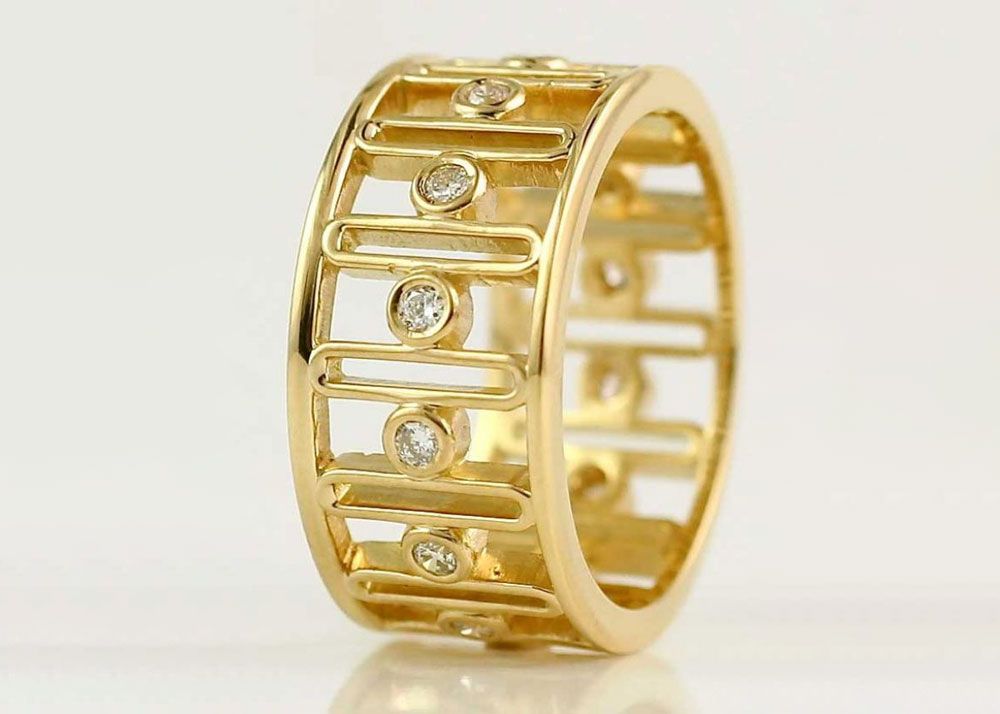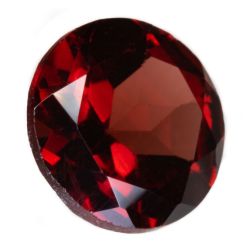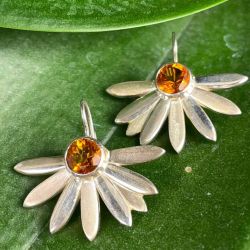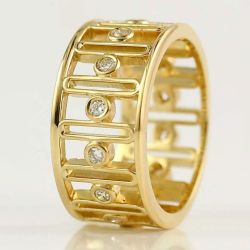What is a Karat of Gold?

When shopping for gold, you’ll always see it spoken of in terms of karats: 24k, 18k, 12k, and so on. But what exactly is a karat? What does it measure, and how does it compare to the confusingly similar “carat”?
Whereas “carat” measures the weight of a gemstone (1 ct. = 200 200 mg or 0.007 oz), “karat” measures the purity of gold, where 1 karat = 1/24 part gold. Here’s how that translates to percentages:
- 24k: 100% pure gold (or as close to 100% as possible)
- 18k: 75% gold, 25% alloy metals
- 14k: 58.5% gold, 41.5% alloy metals
- 12k: 50% gold, 50% alloy metals
- 10k: 41.7% gold, 58.3% alloy metals
Typical alloy metals include silver, copper, zinc, and palladium. These metals are combined with gold to add strength, as gold is a very soft metal, and to create different colors. Rose gold, for instance, is 75% gold, 22.25% copper, and 2.75% silver, while white gold is an 18k alloy consisting of 25% platinum or palladium. Metallurgists have been alloying gold and copper for almost as long as gold and copper have been used for decorative purposes, as the two metals have similar melting points, but it was only in the 20th century that refining techniques and technologies allowed for such a wide range of gold alloys.
14k and 10k are standard ratios in the United States, but you’ll see 15k and 9k gold in jewelry from the UK. This has to do with laws governing what can legally be sold as “gold.” In the US, 10k is the legal minimum standard gold purity, while in the UK and parts of Europe, the minimum is 9k.
In the 1800s, the accepted standards in the UK were 18k and 22k. An 1855 law required all wedding rings to be hallmarked. A hallmark—a small stamp on the inside of the ring—ensured that the ring was what the seller claimed it to be and not debased or even imitation gold. Consumers had only two options for gold jewelry, with stronger 18k gold being better for gemstone settings, while more malleable 22k gold is appropriate for simple, unadorned designs like wedding bands. To this day, wedding rings in the UK are traditionally 22k gold.
Is 24k Gold “Better” Than 18k?
A pure gold piece of jewelry seems desirable, but it might not be the best choice for most pieces, especially those you intend to wear often. This is because unalloyed, 24k gold is extremely malleable, so your 24k gold jewelry could easily be bent, dented, or warped. It also has a bright, yellowy appearance which many Europeans and Americans find more “fake” looking, as most fine jewelry sold in these markets is a more mellow 18k gold. Its one advantage is that it does not rust or tarnish.
24k gold jewelry is extremely delicate and expensive and is best looked at as an investment, like gold bullion. This is how gold jewelry is typically treated in India. 24k gold jewelry, rather than gold coins or bullion, is the most common type of gold investment. More than a fashion accessory, gold jewelry is a type of portable wealth or wearable savings account.
While 18k gold is most common in American and European fine jewelry, 24k gold has long been popular in China, where it is a traditional wedding gift. Brides will often be seen wearing gold necklaces featuring a massive, smiling mother pig and bracelets with intricate dragon and phoenix designs. Millennial Chinese consumers, however, just like their western counterparts, are beginning to reject tradition in favor of individuality and a minimalist aesthetic, seeking out more subdued 22k and 18k designs.
Just as 24k gold isn’t necessarily a superior choice for jewelry, 10k gold isn’t necessarily inferior or undesirable, either. The high percentage of alloy metals give the piece added strength and durability, and the muted color appeals to a more subtle sensibility.
In most cases, 24k gold is not an everyday choice, owing to both its high cost and low durability, but makes for a solid investment. There are a variety of gold alloys in a vast array of colors to suit any look, mood, or event.









